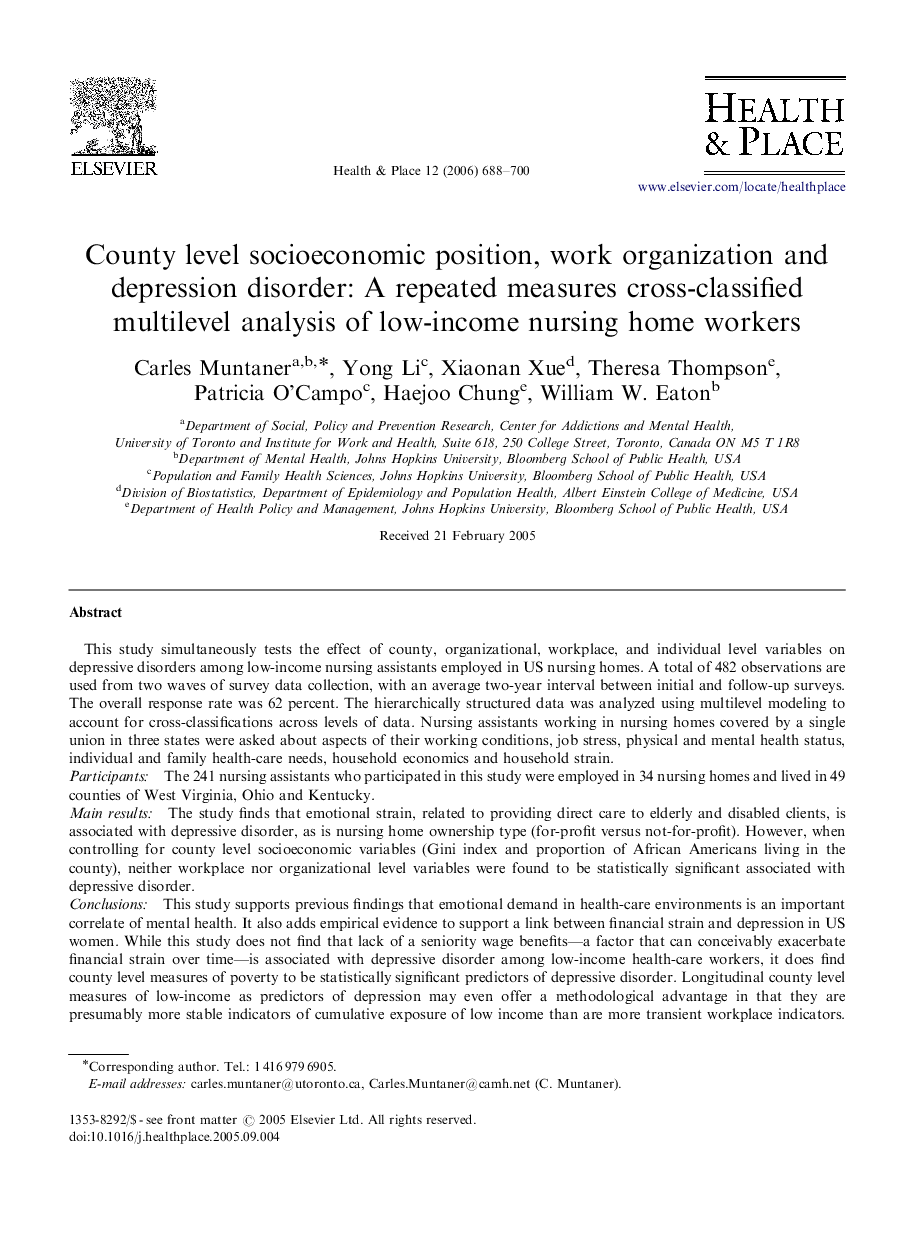| کد مقاله | کد نشریه | سال انتشار | مقاله انگلیسی | نسخه تمام متن |
|---|---|---|---|---|
| 1048991 | 945517 | 2006 | 13 صفحه PDF | دانلود رایگان |

This study simultaneously tests the effect of county, organizational, workplace, and individual level variables on depressive disorders among low-income nursing assistants employed in US nursing homes. A total of 482 observations are used from two waves of survey data collection, with an average two-year interval between initial and follow-up surveys. The overall response rate was 62 percent. The hierarchically structured data was analyzed using multilevel modeling to account for cross-classifications across levels of data. Nursing assistants working in nursing homes covered by a single union in three states were asked about aspects of their working conditions, job stress, physical and mental health status, individual and family health-care needs, household economics and household strain.ParticipantsThe 241 nursing assistants who participated in this study were employed in 34 nursing homes and lived in 49 counties of West Virginia, Ohio and Kentucky.Main resultsThe study finds that emotional strain, related to providing direct care to elderly and disabled clients, is associated with depressive disorder, as is nursing home ownership type (for-profit versus not-for-profit). However, when controlling for county level socioeconomic variables (Gini index and proportion of African Americans living in the county), neither workplace nor organizational level variables were found to be statistically significant associated with depressive disorder.ConclusionsThis study supports previous findings that emotional demand in health-care environments is an important correlate of mental health. It also adds empirical evidence to support a link between financial strain and depression in US women. While this study does not find that lack of a seniority wage benefits—a factor that can conceivably exacerbate financial strain over time—is associated with depressive disorder among low-income health-care workers, it does find county level measures of poverty to be statistically significant predictors of depressive disorder. Longitudinal county level measures of low-income as predictors of depression may even offer a methodological advantage in that they are presumably more stable indicators of cumulative exposure of low income than are more transient workplace indicators. Incorporating measures of cumulative exposure to low income into empirical studies would be particularly timely given the global changes that are currently restructuring the labor force and influencing work organization and labor processes—most notably the growth in low income jobs and the deskilling of labor. Though this study provides evidence that workplace and organizational level variables are associated with depressive disorder among low-wage nursing assistants in US nursing homes, the fact that these relationships do not hold once county level measures of poverty are controlled for, suggests that more distal upstream determinants of workplace mental health problems, such economic inequality, may be at play in determining the mental health of low wage workers.
Journal: Health & Place - Volume 12, Issue 4, December 2006, Pages 688–700